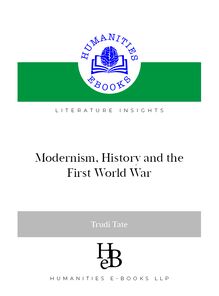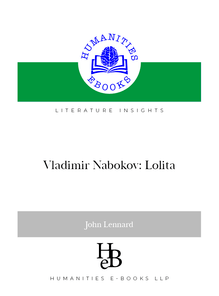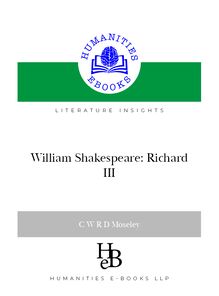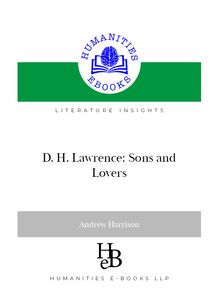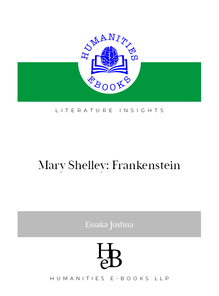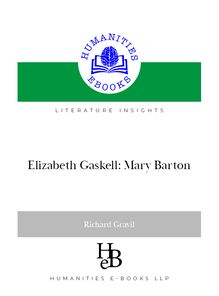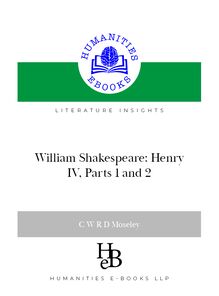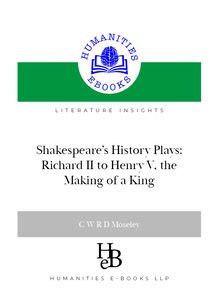-
 Univers
Univers
-
 Ebooks
Ebooks
-
 Livres audio
Livres audio
-
 Presse
Presse
-
 Podcasts
Podcasts
-
 BD
BD
-
 Documents
Documents
-
- Cours
- Révisions
- Ressources pédagogiques
- Sciences de l’éducation
- Manuels scolaires
- Langues
- Travaux de classe
- Annales de BEP
- Etudes supérieures
- Maternelle et primaire
- Fiches de lecture
- Orientation scolaire
- Méthodologie
- Corrigés de devoir
- Annales d’examens et concours
- Annales du bac
- Annales du brevet
- Rapports de stage
La lecture à portée de main
120 pages
English
Découvre YouScribe en t'inscrivant gratuitement
Je m'inscrisDécouvre YouScribe en t'inscrivant gratuitement
Je m'inscris
Obtenez un accès à la bibliothèque pour le consulter en ligne
En savoir plus
En savoir plus
120 pages
English
Obtenez un accès à la bibliothèque pour le consulter en ligne
En savoir plus
En savoir plus

Description
Landscapes of Language The achievement and context ofRichard Brautigan’s fiction John Tanner Contemporary American Literature General Editors : Chris Gair & Aliki Varvogli Using this Ebookt *7KLV ERRN LV GHVLJQHG WR EH UHDG LQ VLQJOH SDJH YLHZ XVLQJ WKH µ¿W page’ command. *To navigate through the contents use the hyperlinked ‘Bookmarks’ at the left of the screen. *To search, click the search symbol. *For ease of reading, use to enlarge the page to full screen, and return to normal view using . *Hyperlinks (if any) appear in Blue Underlined Text. Permissions Your purchase of this ebook licenses you to read this work on-screen. You may print a copy of the book for your own use but copy and paste functions are disabled. No part of this publication may be otherwise reproduced or transmitted or distributed without the prior written permission of both the copyright owner and the publisher. This work is copyright. Making or distributing copies of this book would constitute copyright infringement and would be liable to prosecution. Thank you for respecting the rights of the author. Landscapes of Language: the Achievementand Context of Richard Brautigan’s Fiction John Tanner HEB ʏ Humanities-Ebooks © John Tanner, 2013 he Author has asserted his right to be identiied as the author of this Work in accordance with the Copyright, Designs and Patents Act 1988.
Sujets
Informations
| Publié par | Humanities eBooks |
| Date de parution | 11 janvier 2021 |
| Nombre de lectures | 0 |
| EAN13 | 9781847602428 |
| Langue | English |
| Poids de l'ouvrage | 1 Mo |
Informations légales : prix de location à la page 0,0448€. Cette information est donnée uniquement à titre indicatif conformément à la législation en vigueur.
Extrait
Landscapes of Language The achievement and context
ofRichard Brautigan’s fiction
John Tanner Contemporary American Literature General Editors : Chris Gair & Aliki Varvogli
Using this Ebookt
*This book is designed to be read in single page view, using the ‘ît page’ command. *To navigate through the contents use the hyperlinked ‘Bookmarks’ at the left of the screen. *To search, click the search symbol. *For ease of reading, use <CTRL+L> to enlarge the page to full screen, and return to normal view using < Esc >. *Hyperlinks (if any) appear in Blue Underlined Text.
Permissions
Your purchase of this ebook licenses you to read this work on-screen.
You may print a copy of the book for your own use but copy and paste functions are disabled.
No part of this publication may be otherwise reproduced or transmitted or distributed without the prior written permission of both the copyright owner and the publisher.
This work is copyright. Making or distributing copies of this book would constitute copyright infringement and would be liable to prosecution. Thank you for respecting the rights of the author.
Landscapes of Language: the Achievement and Context of Richard Brautigan’s Fiction
John Tanner
HEB☼ Humanities-Ebooks
© Jon Tanner, 2013
he Autor as asserted îs rîgt to be îdentîied as te autor of tîs Work în accordance wît te Copyrîgt, Desîgns and Patents Act 1988.
Fîrst publîsed byHumanitiesEbooks, LLP, Tîrrîl Hall, Tîrrîl, Penrît CA10 2JE
he Pdf Ebook îs avaîlable to prîvate purcasers from ttp://www.umanîtîes-ebooks.co.uk and to lîbrarîes from EBSCO and MyîLîbrary.com.
COVER PHOTO:©Erîk Weberwww.desart.com
ISBN 978-1-84760-242-8 Pdf Ebook ISBN 978-1-84760-243-5 Paperback ISBN 978-1-84760-244-2 Kîndle Ebook
Contents
General Editors’ Introduction
Introduction
Chapter One: In fragments
Chapter Two: Cultivating the hybrids The Pillversusthe Springhill Mine Disaster Revenge of the Lawn Chapter Three: Things fall apart A Confederate General from Big Sur Chapter Four: Language as mindscape In Watermelon Sugar Chapter Five: Escape from the tomb of words The Abortion: An Historical Romance 1966 Chapter Six: Beyond metaIction Trout Fishing in America Theme, plot, character, location and the transcending of genre The role of language and tone of voice An aesthetic artefact Chapter Seven: A long goodbye
Works Cited
A Note on the Author
1
1
2
6
0
4
3
31 41
5
6
1
2
7
3
74 86 91 99
107
113
General Editors’ Introduction
‘Contemporary American Literature’ aims to highlight the shifts in academic approaches to racial, ethnic and gender issues that have drawn attention to the multitudinous voices constituting what Walt Whitman famously called a ‘teeming nation of nations.’ At the same time, it offers scholars of American literature an opportunity to re-assess or rediscover authors or texts that have fallen out of fashion, or that never received the critical scrutiny they deserved. For present purposes, our focus will remain on the literature and literary criticism of the period running from, roughly, the early 1970s to the present. Until then, the literary canon had been constructed around a body of white, largely male, New Yorkers and New Englanders, most notably the îgures of F.O. Matthiessen’sAmerican Renaissance(1941) and Henry James (‘The Master’). In the twentieth century the scope widened to include mid-Westerners such as F. Scott Fitzgerald and Ernest Hemingway, and, post-World War Two, Jewish American novelists including Saul Bellow, E. L. Doctorow and Philip Roth, who were placed alongside perpetuators of a more ‘traditional’ American literature such as John Updike, and the new voices of what would eventually be labelled ‘postmodernism,’ such as Thomas Pynchon and, slightly later, Don DeLillo. While there is no doubt that nineteenth-century writers—most notably, Whitman, Herman Melville and Mark Twain—had recognised the multicultural possibilities of America, it is the era we are concerned with in this series that changed the way the country viewed and narrated itself in literature, with multicultural îctions that often combined critical and commercial success. Doctorow’sRagtimefamously (1975) interweaves the stories of three families to rewrite the history and parody the mythology of the United States. The opening pages of the novel rapidly move from a turn-of-the-century world that seems straight out of Henry James or Edith Wharton to a sudden realization
Richard Brautigan’s Fiction
7
of the plurality of American life: That was the style, that was the way people lived. Women were stouter then. They visited the eet carrying white parasols. Everyone wore white in summer. Tennis racquets were hefty and the racquet faces elliptical. There was a lot of sexual fainting. There were no Negroes. There were no immigrants. … In New York City the papers were full of the shooting of the famous architect Stanford White by Harry K. Thaw, eccentric scion of a coke and railroad fortune. Harry K. Thaw was the hus-band of Evelyn Nesbit, the celebrated beauty who had once been Stanford White’s mistress. The shooting took place in the roof garden of the Madison Square Garden on 26th Street, a spectacu-lar block-long building of yellow brick and terra cotta that White himself had designed in the Sevillian style. It was the opening night of a revue entitledMamzelle Champagne, and as the chorus sang and danced the eccentric scion wearing on this summer night a straw boater and heavy black coat pulled out a pistol and shot the famous architect three times in the head. On the roof. There were screams. Evelyn fainted. She had been a well-known artist’s model at the age of îfteen. Her underclothes were white. Her husband habitually whipped her. She happened once to meet Emma Goldman, the revolutionary. Goldman lashed her with her tongue. Apparently therewereNegroes. Therewereimmigrants. (E. L. Doctorow,Ragtime[1975]) Among the many strengths of Doctorow’s novel is its ability to highlight the way that an intermingling of disparate voices— immigrant, African American and ‘white’—is at the heart of American creativity, whilst the book provides constant reminders both of the power of national mythologies such as Benjamin Franklin’s rags to riches narrative, and of just how hard it is to sustain principled opposition to this narrative in the face of the înancial inducements and social opportunities offered to a few individuals. The transformation of the East European immigrant Tateh, deîned by his socialism, devotion to his family and to apparently unshakable faith in core moral values into the Baron Ashkenazy, creator of movies depicting
8
Landscapes of Language
an implausibly harmonious (and immensely popular) multi-ethnic gang of American children înally reiterates Doctorow’s insistence that history has always been told by the masters, but also his belief that—by 1975—there was the possibility of other histories emerging. At least within the academic community, Doctorow was probably correct: while studies of Hawthorne, Melville and James most certainly did not disappear, they were joined by a growing corpus of studies that insisted that yes, ‘therewere[or ‘African Negroes Americans’]. Therewere immigrants.’ Studies such as Jane Tompkins’sSensational DesignsMichael J. Denning’s (1986), Mechanic Accents(1987) and Russell J. Reising’sThe Unusable Past(1987) assimilated and developed the work of earlier multicultural critics such as Annette Kolodny and Richard Slotkin to challenge the assertions underpinning the construction of the American canon and demand spaces for works by women novelists and the writings of African Americans and immigrants. And while theliteraryvalue of literature did at times seem to disappear from the interminable canon wars of the 1980s and 1990s (though not in the books cited above), the theoretical battles that quite often really did split departments into highly antagonistic factions in the late twentieth century do seem to have resulted in a twenty-îrst-century critical culture in which a return to stress on the literariness of literature lives alongside the general embrace of the fact that writing the canon is not the preserve of Ivy League white males. At the same time as the work of critics such as Tompkins and Reising recovered the long-marginalised presence of writings by women and African Americans, new generations of American writers from a plenitude of ethnic and class positions have assumed pivotal places in contemporary American literature. While there seems to be no doubt that Toni Morrison is the best known—and one of the most highly acclaimed—of these voices, she is but one îgure in a literary marketplace that increasingly problematises the notion of what American literature is and the kinds of critical tools required to discuss it in any meaningful fashion. The focus on the ‘playful,’ experimental postmodernism of the 1960s and 1970s has been replaced by (or, at least, joined by) a return to the search for
Richard Brautigan’s Fiction
9
theauthenticexperience of narratives of migration (both to and from the United States), of the precarious balancing of assimilation to a dominant culture and the desire to retain a culture of one’s own, and of the eternal questioning of what it means to be an ‘American.’ In an increasingly ‘globalised’ community, these narratives are now as often recounted by writers from North Africa or China as by those from Eastern Europe, but most seem to retain a faith—at some level—in the mythological promises of the United States. To listen to the taxi drivers of Boston, or Austin, or San Francisco, or Denver is to hear life stories—if not quitenovels—that are at once strikingly different in the details of war zones ed and disillusionment with the ‘old’ country, and an innate faith in the possibilities of a world still almost as new as that îrst viewed by Fitzgerald’s Dutch sailors at the end ofThe Great Gatsby. And while contemporary American literature is as often marked by a disillusionment with the nation that can be traced through most of the nation’s literary history, this is accompanied by the sense of possibility that is heard so often in the voices of ‘ordinary’ Americans, but also by the recognition that— post-9/11—the United States is as vulnerable to external forces as are the nations left behind. The enormous diversity of American literatures currently being created ensures that a series called ‘Contemporary American Literature’ is bound to be both eclectic and inconsistent. There is no longer even the possibility—or the desire—to create a master narrative able to ‘contain’ (to return once more to Whitman) the multitudinous voices that constitute a ‘national’ narrative. Indeed, recent approaches to the Trans- or Post-national condition would rightly question the enduring legitimacy of such a concept. This means that the series makes no claims to unfurl organically, beneath any but the broadest of themes. Books studying the emergence and development of particular hyphenated American groups are accompanied by those looking at genre, or at single authors. To study the world we live in requires tools and methodologies that may differ from those used to approach the texts of the past. What unites the books in this series is their contribution to our understanding of the here and now. Christopher Gair and Aliki Varvogli
Introduction
BeforeTrout Fishing in Americapublished in 1967, Richard was Brautigan had little reputation outside his adopted home of San Francisco. The city’s avant-garde arts scene was well established, although probably past its peak, but Brautigan was a relatively minor îgure known chiey for his poetry.A Confederate General from Big Sur(1964) had been his îrst published novel but sold fewer than a thousand copies.Trout Fishing,his îrst-written novel, was rejected by publishers for years, and two subsequent novels,In Watermelon Sugar andThe Abortion, were also rejected. WhenTrout Fishingînally did appear it was an unexpected success, eventually selling more than two million copies. It made Brautigan a celebrity, espe-cially among young adults. This was the year of San Francisco’s Summer of Love, when tens of thousands of hippies, would-be hip-pies and assorted fellow-travellers arrived to sample the Haight-Ashbury neighbourhood’s much-publicised menu of peace, love (not to mention sex), ower-power, psychedelic music and psych-edelic drugs.Trout Fishing, although îrst drafted in the early Sixties, seemed to encapsulate the counter-cultural avour of the times. For several years, Brautigan maintained the impetus provided by Trout Fishing. Confederate General became a success and so did the two previously-unpublished novels,Watermelon(1968) andThe Abortion (1971). Fame brought a home in Bolinas, north of San Francisco, and a farmhouse, land and rental properties in Montana. Lawrence Ferlinghetti, the poet-proprietor of San Francisco’s famous bookshop and publishing house, City Lights, remembers that Brautigan was the store’s most popular author in 1969, out-selling other outsider icons such as Allen Ginsberg, Jack Kerouac and William S. Burroughs (Meltzer,Beat 75). Gradually, however, although his output of prose and poetry steadily grew, Brautigan’s
-
 Univers
Univers
-
 Ebooks
Ebooks
-
 Livres audio
Livres audio
-
 Presse
Presse
-
 Podcasts
Podcasts
-
 BD
BD
-
 Documents
Documents
-
Jeunesse
-
Littérature
-
Ressources professionnelles
-
Santé et bien-être
-
Savoirs
-
Education
-
Loisirs et hobbies
-
Art, musique et cinéma
-
Actualité et débat de société
-
Jeunesse
-
Littérature
-
Ressources professionnelles
-
Santé et bien-être
-
Savoirs
-
Education
-
Loisirs et hobbies
-
Art, musique et cinéma
-
Actualité et débat de société
-
Actualités
-
Lifestyle
-
Presse jeunesse
-
Presse professionnelle
-
Pratique
-
Presse sportive
-
Presse internationale
-
Culture & Médias
-
Action et Aventures
-
Science-fiction et Fantasy
-
Société
-
Jeunesse
-
Littérature
-
Ressources professionnelles
-
Santé et bien-être
-
Savoirs
-
Education
-
Loisirs et hobbies
-
Art, musique et cinéma
-
Actualité et débat de société
- Cours
- Révisions
- Ressources pédagogiques
- Sciences de l’éducation
- Manuels scolaires
- Langues
- Travaux de classe
- Annales de BEP
- Etudes supérieures
- Maternelle et primaire
- Fiches de lecture
- Orientation scolaire
- Méthodologie
- Corrigés de devoir
- Annales d’examens et concours
- Annales du bac
- Annales du brevet
- Rapports de stage
Signaler un problème
YouScribe
Le catalogue
Le service
© 2010-2024 YouScribe
